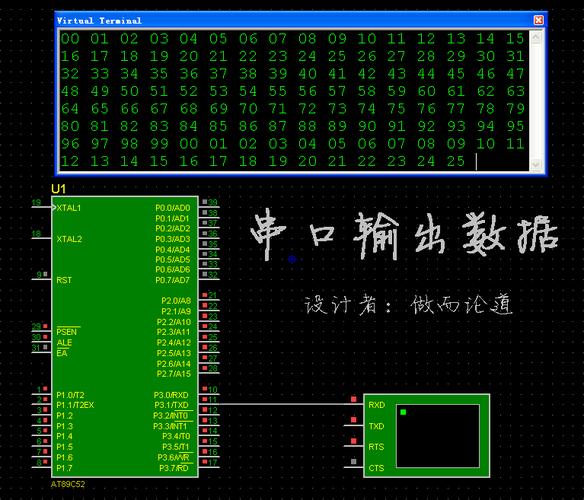串口通信是一种在计算机和外部设备之间进行数据传输的常见方式,特别适用于嵌入式系统和物联网设备。在C语言中,通过操作串口通信端口的相关函数,可以实现串口通信编程。

1. 打开串口
在C语言中,可以使用open()函数来打开串口设备文件,例如:int fd = open("/dev/ttyS0", O_RDWR | O_NOCTTY | O_NDELAY);。其中/dev/ttyS0是串口设备文件路径,O_RDWR表示读写模式,O_NOCTTY表示不将串口设备作为控制终端,O_NDELAY表示非阻塞模式。
2. 配置串口
配置串口通信参数包括波特率、数据位、停止位、校验位等。可以使用tcgetattr()和tcsetattr()函数来获取和设置串口属性。例如:
struct termios options;
tcgetattr(fd, &options);
cfsetispeed(&options, B9600);
cfsetospeed(&options, B9600);
options.c_cflag |= (CLOCAL | CREAD);
options.c_cflag &= ~PARENB;
options.c_cflag &= ~CSTOPB;
options.c_cflag &= ~CSIZE;
options.c_cflag |= CS8;
tcsetattr(fd, TCSANOW, &options);
3. 读写数据
使用read()和write()函数可以实现从串口读取数据和向串口写入数据。例如:
char buf[255];
int n = read(fd, buf, sizeof(buf));
int m = write(fd, "Hello, Serial", 12);
4. 关闭串口
在程序结束时,需要使用close()函数关闭串口,释放资源。例如:close(fd);
5. 错误处理
在串口通信编程中,需要注意错误处理,例如打开串口失败、读写数据失败等情况。可以通过errno变量来获取错误码,并进行相应处理。
6. 示例代码
以下是一个简单的串口通信示例代码:
#include
#include
#include
#include
int main() {
int fd = open("/dev/ttyS0", O_RDWR | O_NOCTTY | O_NDELAY);
if (fd == -1) {
perror("open");
return -1;
}
struct termios options;
tcgetattr(fd, &options);
cfsetispeed(&options, B9600);
cfsetospeed(&options, B9600);
options.c_cflag |= (CLOCAL | CREAD);
options.c_cflag &= ~PARENB;
options.c_cflag &= ~CSTOPB;
options.c_cflag &= ~CSIZE;
options.c_cflag |= CS8;
tcsetattr(fd, TCSANOW, &options);
char buf[255];
int n = read(fd, buf, sizeof(buf));
if (n > 0) {
printf("Read data: %s\n", buf);
}
int m = write(fd, "Hello, Serial", 12);
if (m != 12) {
perror("write");
}
close(fd);
return 0;
}
7. 注意事项
- 在使用串口通信时,需要确保串口设备文件的权限设置正确,通常需要root权限或者将用户添加到dialout组。
- 不同的操作系统可能有不同的串口设备文件路径和参数设置方式,需要根据实际情况进行调整。
- 在实际应用中,可以封装串口通信相关的函数和数据结构,提高代码的可维护性和可重用性。
通过以上步骤,可以在C语言中实现串口通信编程,实现与外部设备的数据交互。
免责声明:本网站部分内容由用户自行上传,若侵犯了您的权益,请联系我们处理,谢谢!











